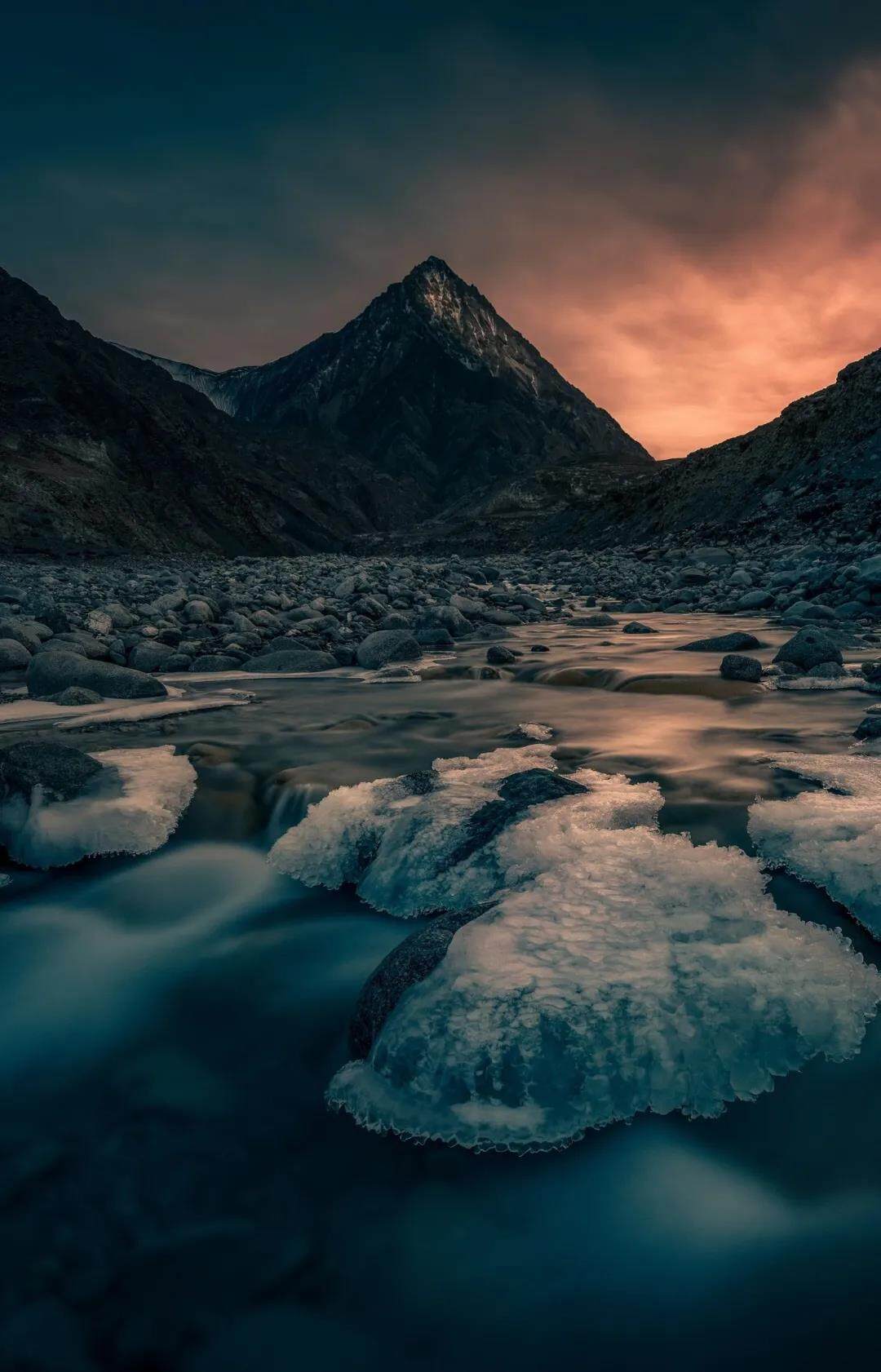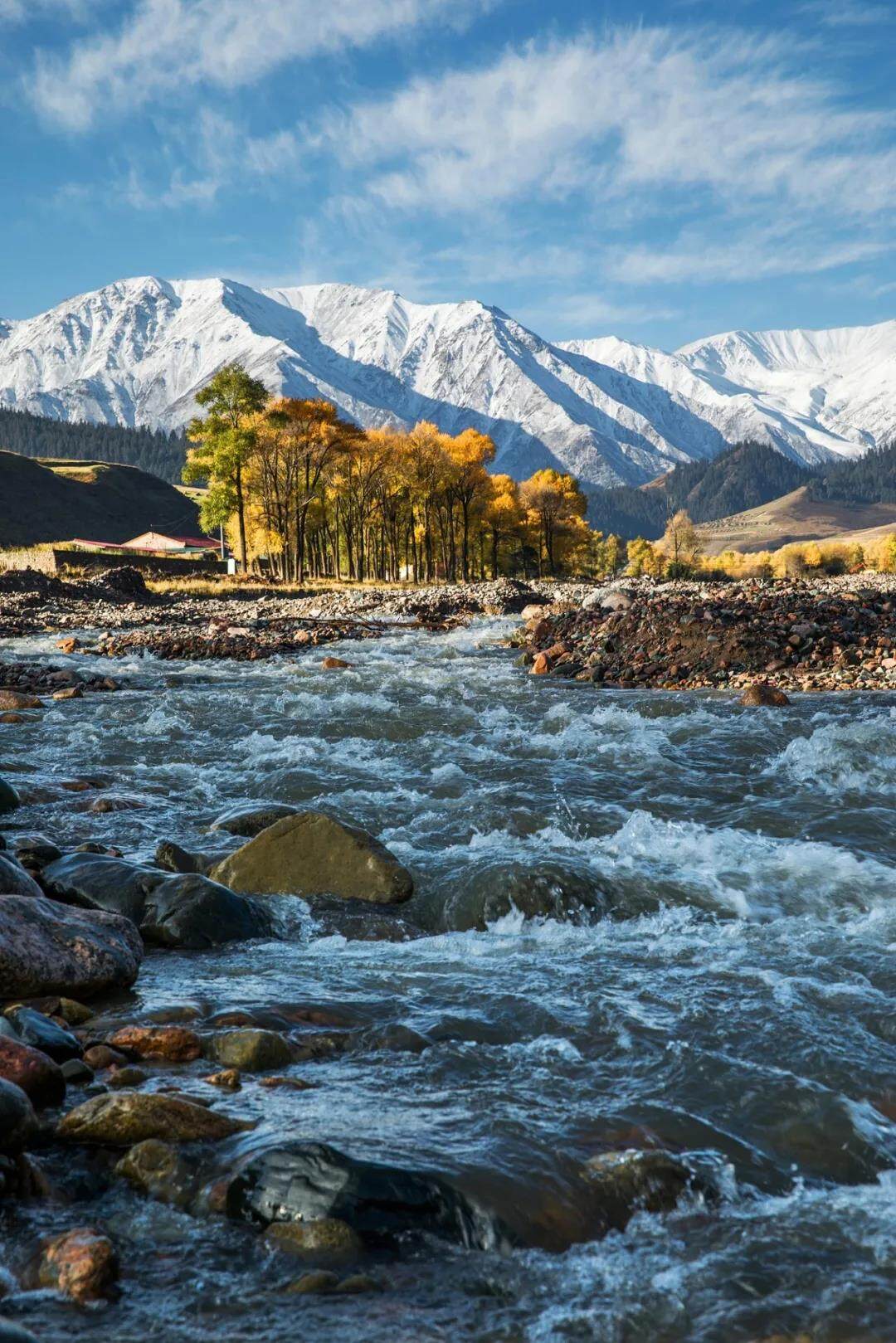- Heihe, as China’s second largest inland river, contributes everything he has to the Hexi Corridor and Alxa Plateau

If you search for Heihe on the Baidu map, the map will automatically switch to Heihe City in Heilongjiang Province. However, the other Heihe should be even more famous: it is one of the great rivers ruled by the great Yu, it nourishes the Yanzhi Mountain, which is the heart and soul of the Xiongnu, and it gave birth to Zhang Guoyi, which leads to Jin Zhangye in the Western Regions, and it is in Alxa. A piece of oasis has been cast in the vast desert of China. Without it, our history and life would have been different. Heihe, a gift from Qilian Mountain.

Heihe River Basin Map
The water of Heihe comes from the sky
The Tianshan Mountain is the ancient Chinese name for the Qilian Mountains between Gansu and Qinghai. The water vapor from the Arctic Ocean, the Pacific Ocean, and the Indian Ocean is blocked by this mountain range with an average altitude of more than 4000 meters. It turns into rain and merges into a river, Heihe. , It is from this.

Qilian, mountains make rivers
The hillside below the snow line is the place where Heihe River was born. Although the annual average temperature here only fluctuates around 0 degrees Celsius, which is very cold, the average annual rainfall of more than 350 mm waters out patches of shrubs and arbor forests, and the water they conserve, Converging into a trickle, it is Heihe's most subtle bloodline.

The jungle and the river under the Qilian Mountains
The tumbling water vapor also shaped the rough and magnificent valley glaciers for the Qilian Mountains. The glaciers here are continental glaciers, relatively stable, and low sensitivity to climate change. They are stabilizers of river water volume. Under the common care of glaciers, snowmelt, rain and forest conservation, the Heihe River flows continuously throughout the year.

Mengke Glacier
For the 821-kilometer-long Heihe, the upper reaches of the mountains are almost all its "source of income." The annual precipitation in the plain area of the middle reaches of the Heihe River Basin is less than 200 mm, and the annual precipitation in the lower plain area is reduced to less than 50 mm. 90% of the Heihe River water comes from this mountain catchment area of more than 10,000 square kilometers. It can be said that without Qilian Mountains, there would be no Heihe.
In the winding valley of the Qilian Mountains on the Qinghai side, the Heihe River flows slowly from west to east and grows stronger. At the Huangzang Temple at the junction of Qinghai and Gansu provinces, it encounters the Babao River from east to west. At this point, Heihe turned to the north, entered Gansu, continued to dig mountains and valleys, and rush forward.

The rushing river in the Qilian Mountains
The Heihe River with plenty of water rushed out of the valley at the boundary between the upper and middle reaches of Yingluo Gorge and entered the plain. It is ready to go! As China's second largest inland river, it will contribute everything it owns to the Hexi Corridor and Alxa Plateau.
The Mother River of Jin Zhangye
The Heihe River, which rushed out of the mountain pass, slowed down on the plains of the Hexi Corridor. It created an ancient city called Zhangye for the arid northwest.
Bancheng Reed refers to the wetland, and the famous Heihe Wetland is a wonderful presentation of this scenery. The waters of Heihe River have left the scattered waters, forests, swamps and tidal flats of Zhangye Plain. It is a natural barrier to curb the southward invasion of the Badain Jaran Desert in the north and protect the oasis under the Qilian Mountains.

Heihe wetland, bird paradise
The Heihe Wetland is also a dining table for migratory birds to replenish energy. September is the peak period of migratory bird migration. On average, thousands of birds rest here every day to replenish energy.
Bar-headed geese flying from the Qinghai-Tibet Plateau have seized patches of tidal flats. The abundant mollusks here are enough to relieve their hungry, and more birds, such as whooper swans, grey geese, and black-winged sandpipers, choose Looking for food on the open water. The excellent environment of the Heihe Wetland makes some migratory birds even consider this place as their second hometown. Every year, they will spend the breeding period here and give birth to new life.

In the Heihe Wetland in Gaotai County, Zhangye City, egrets, grey herons and white spoonbills appear in the same scene
Half-city pagoda shadow, talking about the stupa. Zhangye was the throat of the Silk Road, and Buddhism was introduced from the Western Regions to the Central Plains along this path. The Zhangye Mu Pagoda, built in the Sui Dynasty, is 33 meters high at nine levels. After more than a thousand years of vicissitudes, it has been damaged and rebuilt several times. As long as the Heihe River still flows, the fire of civilization in Zhangye will not be extinguished.

Zhangye Ancient Tower
In fact, the Heihe River not only nourishes the farming civilization that entered the Hexi Corridor, it is also one of the mother rivers of nomads. The Shandan River (the upper reaches of the Damaying River), which also originates from the Qilian Mountains, is one of the tributaries of the Heihe River. It has created the largest and oldest Shandan horse farm in the world.

Shandan Horse Farm
Before becoming an army horse farm, the fertile grassland along the Shandan River was a paradise for nomads. Until 121 BC, Huo Qubing, a general of hussars, led two troops into the Hexi Corridor to attack the Huns, and firmly controlled it in the Han Dynasty. Hands.
Since then, the Central Plains regime has drawn the four circles of Wuwei, Zhangye, Jiuquan, and Dunhuang in the Hexi Corridor. Those Huns who have traveled far away have left behind "I lost my Yanzhi Mountain and made my women colorless. Lost my Qilian Mountains." , So that my six beasts do not live in abundance" lament. (A purple-red flower grows in Yanzhi Mountain to make rouge)

Shandan River and Shandan Army Horse Farm under Qilian Mountains
Zhangye, nurtured by the Heishuihe River, has become a veritable "Jiangnan outside the Great Wall" in the hands of farming civilization, and the folk sayings "Golden Zhangye, Yinwuwei" are even more popular among the people. Although the source of the "gold" in "Jin Zhangye" has not yet been determined, most of it is attributed to the fertile land and high grain yield here.

Good fields and wetlands irrigated by Heihe
During the Southern and Northern Dynasties, Zhangye was a haven for Han civilization; after the reunification of the Sui Dynasty, Emperor Yang of Sui visited Zhangye to receive court views from the Western Regions, which can be called the world’s earliest "World Expo." Nun, dozens of dendrobiums, and armaments accumulated for decades"; until the Ming and Qing Dynasties, Zhangye became a regional center and logistics base, commanding the military and civilians of the surrounding towns.
Three thousand weak water, only take one scoop to drink
Heihe came to Zhengyi Gorge after 185 kilometers from Yingluo Gorge Haohao Tangtang. After Zhengyi Gorge, it is downstream. Downstream of the Heihe River, there is a more resounding name-weak water.

Autumn Scenery by the Weak Water in Ejina Banner
"Shangshu·Yugong" records that Dayu "drew the weak water to Heli, and the aftermath entered the quicksand". The weak water referred to here is the Heihe, and Heli is a hill on the east side of Zhengyi Gorge. The quicksand is not " The Liusha River in "Journey to the West" refers to the Juyan Sea, which is 300 kilometers away. Therefore, when this sentence is translated, it is Dayu who led Heihe to Heli Mountain and finally merged into Juyanhai.

Juyanhai in the early 1930s (redrawn based on the actual survey of the Juyan Sea by the Sino-Swiss Northwest Scientific Investigation Group, the name of the lake is different from today)
The term "weak water" often appears in Chinese ancient books. For example, in the "Shan Hai Jing", there is a record that "there is water in the north of Kunlun, and its power cannot beat mustard, hence the name "weak water"." Some of these weak waters refer to shallow waters that cannot carry boats, and some refer to rivers in remote areas. This weak water in the lower reaches of the Heihe River is different.
The more well-known weak water is in "Dream of Red Mansions": "Three thousand weak water, I only take a scoop to drink". Although it speaks of the loyalty of love, for this weak water in Heihe, this sentence Words are also very valuable: perhaps we should only take "a scoop" of water from the Heihe River.

Heihe, the middle reaches of the river must not be exhausted for fishing
Heihe leaves Gansu and enters Inner Mongolia, all the way north, leaving a piece of Ejina Oasis on the Badain Jaran Desert (Heihe is also called Ejina River after entering Inner Mongolia, meaning black water in Mongolian). This area is extremely dry. The annual average precipitation is less than 40 mm, but the evaporation is as high as 3,500 mm. Almost all the water comes from the Heihe River.
The Ejina Oasis is not only an ecological barrier in the desert, but also a smooth road connecting the Mongolian Plateau and the inland of the Central Plains. When Huo Qubing two conquered the Hexi, he passed directly through the Badain Jaran Desert, recharged in the Juyan Sea, and then followed the oasis all the way. Going south, they attacked from the back of King Hunxie and King Xiutu of the Xiongnu, only to fight against Hexi.


After Huo Qubing severely inflicted the Xiongnu, the Han Dynasty built many fortresses in Juyan. The Juyan Hanjian unearthed here records in detail the information of the Han army’s deployment of defenses here. It is hailed as the four major discoveries of the Chinese archives in the 20th century. one
Beginning in the 1950s, the agricultural and industrial water consumption in the middle and lower reaches of the Heihe River began to increase sharply. Reservoirs and dams in the river appeared one after another. In 1961 and 1992, the once-abundant Heihe River even ceased to flow twice. In the 1980s and 1990s, except for the autumn flood season, only dry riverbeds accompanied the oasis.
Less water is left for the oasis, and the land becomes more arid and salinization becomes more serious. The places where reeds were originally clumped, and Populus euphratica and Elaeagnus var. The meadow has gradually degraded and has become a new desert.

The withered Populus euphratica in Ejina, these Populus euphratica trees have died, but they still stand upright
With less water, the two lakes in Juyanhai, the end of the Heihe River, are not immune: Gashunnur completely dried up in 1961, and Supornur dried up many times in the 1970s and 1980s, and the fish in the lake suffered. In the disaster of extinction, birds go and never return, and there are not many animals such as wild donkeys, wild camels, and goose-throated gazelle.
Time has come to the 21st century. On July 17, 2002, under the scientific ground water control, the Heihe River once again flowed into Supornur. On September 24 of the following year, the Gashunnur also had dried up for 42 years. Finally waiting for the nourishment of Heihe, now, with years of supply, Ju Yanhai is rejuvenated with vitality, and Ejina Oasis is slowly returning to its former vitality. Editor/He Yuting
Comment
 Praise
Praise
 Collect
Collect
 Comment
Comment
 Search
Search














Write something~